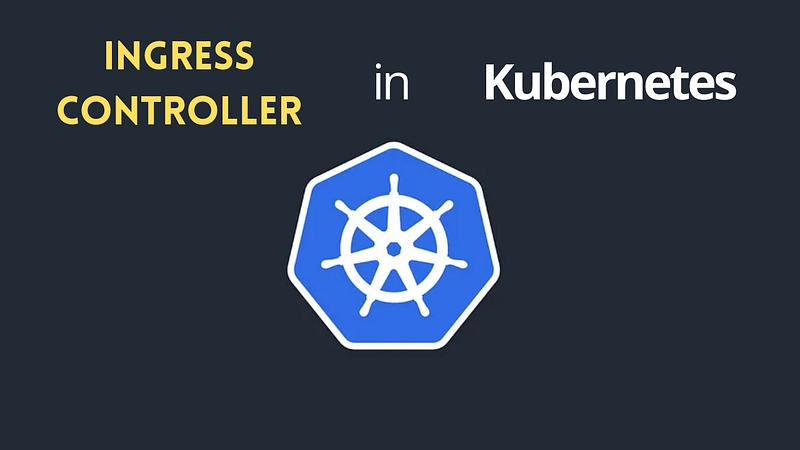Understanding Kubernetes: Part 18 -Ingress Controller

If you’ve been following our Kubernetes series 2025, welcome back! For new readers, check out Part 16: Understanding Kubernetes: Ingress
📖 Not a Medium member? No worries! Here’s the free link: Part 17 — Ingress Controller
What is an Ingress Controller in Kubernetes?
An Ingress Controller is a component in Kubernetes responsible for implementing the Ingress resource, processing its rules, and directing traffic accordingly. It acts as a reverse proxy, routing HTTP/HTTPS traffic based on defined Ingress rules. While an Ingress resource defines how traffic should be routed, the Ingress Controller enforces those rules and manages actual traffic flow within the cluster.
Kubernetes does not provide a default Ingress Controller; users need to deploy one such as Nginx, Traefik, HAProxy, AWS ALB, or GCP HTTP(S) Load Balancer based on their infrastructure requirements.
Example Use Case:
Suppose you have an Ingress resource configured to expose multiple microservices under a single domain. The Ingress Controller (e.g., Nginx) will:
Listen to external traffic requests on port 80/443.
Analyze the Ingress resource configuration.
Route requests to appropriate backend services based on host/path rules.
Provide TLS termination for secure access.
Capabilities of Ingress Controller:
Traffic Routing:
Routes incoming requests based on domain names and URL paths as defined in the Ingress resource.
2. TLS Termination:
Offloads HTTPS processing and provides SSL/TLS encryption using certificates.
3. Load Balancing:
Distributes traffic across backend pods, ensuring scalability and reliability.
4. Annotations for Advanced Features:
Supports configuration via annotations (e.g., rate limiting, access control).
5. Security Features:
Provides authentication, authorization, and DDoS protection mechanisms.
6. Monitoring & Logging:
Integrates with tools like Prometheus, Grafana, and Fluentd for observability.
Popular Ingress Controllers:
Nginx Ingress Controller:
Most widely used, offering robust routing, security, and easy integration.
2. Traefik:
Lightweight with automatic discovery, dynamic configuration, and built-in observability.
3. HAProxy:
High-performance load balancer with extensive traffic management features.
4. AWS ALB Ingress Controller:
Provides AWS-native integration with Elastic Load Balancer (ALB).
5. GCE Ingress Controller:
Google Cloud-specific Ingress Controller that integrates with GCP Load Balancing.
YAML Example — Nginx Ingress Controller Deployment:
apiVersion: apps/v1
kind: Deployment
metadata:
name: nginx-ingress-controller
namespace: ingress-nginx
spec:
replicas: 1
selector:
matchLabels:
app: nginx-ingress
template:
metadata:
labels:
app: nginx-ingress
spec:
containers:
- name: nginx-ingress
image: quay.io/kubernetes-ingress-controller/nginx-ingress-controller:latest
args:
- /nginx-ingress-controller
- --configmap=$(POD_NAMESPACE)/nginx-config
env:
- name: POD_NAMESPACE
valueFrom:
fieldRef:
fieldPath: metadata.namespace
ports:
- name: http
containerPort: 80
- name: https
containerPort: 443Explanation:
Deploys an Nginx Ingress Controller pod that listens on HTTP (80) and HTTPS (443).
Uses environment variables to dynamically configure namespaces.
Requires a
ConfigMapto store custom Nginx configurations.
In My Previous Role:
As a Senior DevOps Engineer, I deployed and managed Ingress Controllers (Nginx and AWS ALB) to provide seamless traffic management across Kubernetes clusters. Some of the key contributions included:
Implemented Nginx Ingress Controller for handling millions of requests daily with zero downtime.
Automated SSL certificate management using Cert-Manager for HTTPS traffic.
Integrated AWS ALB Ingress Controller to optimize traffic routing across multi-region environments.
Fine-tuned Ingress configurations to ensure load balancing, rate limiting, and security hardening.
Leveraged monitoring tools (Prometheus, Grafana) to track traffic patterns and optimize scaling strategies.
🚀 Ready to Master Kubernetes?
Take your Kubernetes journey to the next level with the Master Kubernetes: Zero to Hero course! 🌟 Whether you’re a beginner or aiming to sharpen your skills, this hands-on course covers:
✅ Kubernetes Basics — Grasp essential concepts like nodes, pods, and services. ✅ Advanced Scaling — Learn HPA, VPA, and resource optimization. ✅ Monitoring Tools — Master Prometheus, Grafana, and AlertManager. ✅ Real-World Scenarios — Build production-ready Kubernetes setups.
🎓 What You’ll Achieve
💡 Confidently deploy and manage Kubernetes clusters. 🛡️ Secure applications with ConfigMaps and Secrets. 📈 Optimize and monitor resources for peak performance.
🔥 Start Learning Now: [Join the Master Kubernetes Course](https://cloudops0.gumroad.com/l/k8s)
Don’t miss your chance to become a Kubernetes expert! 💻✨
🚀 Stay ahead in DevOps and SRE! 🔔 Subscribe now and never miss a beat on Kubernetes and more. 🌟
Last updated